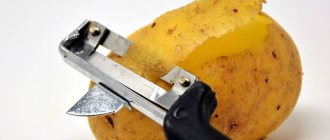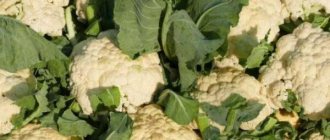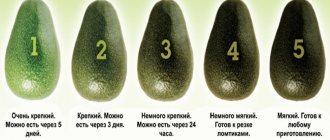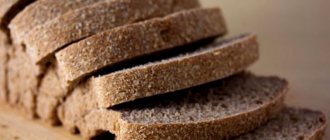Everyone knows that cakes, sweets and pastries spoil your teeth and figure. But without sweets at all, the meal becomes boring and almost ascetic.
There is no need to be sad: instead of confectionery, dried apricots will come to the rescue. This is a real treasure for adults and children: dried apricots are affordable, you can eat them in any quantity with tea or just make compote from them. Dried apricots are rich in vitamins, and they contain incomparably fewer kilocalories than artificial sweets. To make dried fruits enjoyable and beneficial, you need to know how to choose and how to store dried apricots at home in your apartment. The level of humidity, lighting, and the quality of the lid on the jar can seriously affect the shelf life of the fruit.
How to choose dried apricots
Before you reveal the secrets of how to properly store dried apricots at home, it is important to choose them. It would seem that what’s wrong with this - there are whole mountains of this stuff in supermarkets, you can go and buy as much as you like. Moreover, these are not apples that dishonest sellers rub with wax, the fruits also do not need preservatives, so is it possible to spoil dried fruits?
Not so simple. To get a kilogram of dried apricots, there should be three or even four times more fresh ones. The fruits are dried in the sun, packaged in bags and supplied to stores. They retain the vitamins and nutrients inherent in fresh fruits, losing only water. This is a concentrated product, so a few “apricots” will be enough for a tea party; it is better not to use it in very large quantities.
But we will talk about the benefits a little later. Indeed, apart from the sun and a dry surface, apricots do not need anything else to turn into dried apricots. Buyers know this and few people read the information on the back of the bag. But in vain: very often you can find uninvited guests there - glycerin, vegetable fat, as well as the frightening E-220 and E-524. However, the second one (caustic soda) is rarely used for dried apricots; it is mainly used to treat prunes to make them softer. Mostly sulfur dioxide is found, which is hidden behind the E-220 code. This substance is used to speed up the drying of apricots, improve the appearance of dried apricots and protect them from insects.
It would seem that there are only advantages, if you do not take into account the extreme toxicity of E-220. Yes, in a packaged product its concentration is negligible, but if such dried fruits are eaten regularly, the presence of the toxic substance will become noticeable.
Another thing is worse: all dried apricots sold in supermarkets are prepared with sulfur dioxide. The usual bright orange color is enough. Natural dried apricots, without the use of improvers, have a duller shade and do not shine.
So, when buying, you should be wary of greasiness, too bright color, stickiness and heavy odor from the fruit. All this is very common in large grocery stores. If the dried apricots are orange, soft, sticky and smooth, it is not a natural product. Real dried apricots are quite hard, need to be soaked, have a brownish matte tint, and are not greasy. The berries should taste moderately sweet, with a natural fruity aroma.
When squeezed in a fist, dried apricots should not stick together!
There is only one way out: you should go to the market or one of the popular stores of oriental goods and spices to buy dried apricots. Whenever possible, you should purchase organic dried apricots. This product is more expensive, but it retains aroma, natural sweetness, flavor nuances, and most importantly, benefits better than others.
How to properly store dried fruits in the freezer
Freezing will allow dried apricots to be preserved for a long time. In this form, it will remain usable for up to 1.5 years. But under the influence of low temperatures, dried apricots will lose some of their beneficial qualities.
To freeze dried apricots:
- Place the dried fruits on a baking sheet or board so that they do not touch each other. Place in this form in the freezer for 2-4 hours;
- After this, the frozen dried apricots are placed in small batches into containers, tightly closed, and sent to the freezer for long-term storage.
This storage method is suitable not only for dried fruits, but also for dried ones.
It is important to remember that sudden changes in temperature have a bad effect on the condition of dried fruits.
They should be defrosted gradually, first by moving them to the top shelf of the refrigerator for several hours, and then to room temperature. Re-freezing cannot be done. This will lead to loss of taste and beneficial properties of the product.
Best before date
There would seem to be no particular difficulties in how to properly store dried apricots, if not for pests. Dried apricots are unpretentious in storage, but their shelf life is limited. It depends on the storage conditions and location.
So, dried fruits are best stored in the freezer - for a whole year and a half. Just in the refrigerator, on the shelf - ten months. At room temperature in a dry, dark place, dried apricots also feel good, but they will be stored for a maximum of six months. Moreover, provided that the container is regularly inspected and sorted out. In an open place, storage will be even shorter - no more than a month.
Rules for storing prunes indoors
Among other types of dried fruits, prunes are the most undemanding in terms of storage conditions. The main thing is that the room is cool, dark and has a low humidity level. There are other recommendations, which we will discuss below.
Choosing packaging and storage location
In the case of prunes, the storage container can be made of any material. Dried plums have such a strong aroma that other smells are unable to overcome it. You only need to worry about nearby products so that they do not absorb the aroma of prunes.
Household chemicals can negatively affect the smell. In this regard, it is not recommended to leave the product near such products even for a couple of minutes.
Packaging for prunes must be airtight. A good choice is a ceramic container with a tight lid, a metal container that can be closed, or a regular glass jar with a silicone lid.
If prunes are placed in a separate box or cabinet, you can use the following packaging:
- plastic bag with zip fastener;
- cardboard box;
- birch bark or wooden basket;
- bag made of linen or canvas.
If you choose containers made of durable materials to store dried plums, then before filling they need to be washed with soda, doused with boiling water and dried. If the container is made of fragile material, it should be wiped with a salt solution and dried. Next, fill it with dry fruits.
Rules for preparing and using saline solution:
- Dissolve half a kilogram of salt in a liter of drinking water. Extra or iodized salt will not work.
- Thoroughly coat the surfaces of the vessel with this solution.
- If the containers are made of fabric, they are soaked in the solution for a couple of minutes and then dried.
We recommend: How to preserve cabbage for the winter
A large amount of drying material can be stored in the pantry. If there is nothing else in the room except prunes, then you do not need to place the prunes in a container, but you can simply string them on threads and hang them.
To prevent prunes from spoiling, the created “beads” are dipped in a saline or soda solution and then dried. Before eating, you just need to wash the prunes and that’s it. To prepare such a solution, 1 tbsp is enough. l. soda or 2 tbsp. l. Dilute salts in a liter of purified water. By the way, treatment with the solution will not affect the taste of the product in any way, however, it will protect the prunes from mold formation.
White plaque, what is it?
The white coating on dried apricots varies. Sometimes this is bleed-through sugar - it can be easily distinguished by barely noticeable whitish stripes that can be cleaned off with a fingernail. It is often noticeable already on the market counter. It can also be colonies of mold - it can be distinguished simply by its specific appearance (usually it has a gray or greenish tint) and smell. However, mold is not always visible on surfaces; its colonies can be located between the cotyledons. A spoiled product always gives off a musty, pungent odor. The worst thing is that fruits are not protected from such troubles anywhere, even on the refrigerator shelf. This happens due to leaky containers and non-compliance with storage conditions.
If mold appears on at least one fruit, the entire package should be thrown away. It affected the entire contents of the package; it was simply not immediately visible everywhere with the naked eye. Further storage of spoiled fruit is pointless.
At room temperature
Our apartments do not have the best conditions for storing dried apricots. However, storing the product in a pantry or dark drawer in the kitchen can extend its shelf life. It is important that the dried apricots are kept in an airtight plastic or glass container in a place near which there are no heating devices. You can also use bags made of natural fabrics. The only disadvantage of such storage is that dried apricots dry out even more in them, a white coating appears on it, and over time bugs can appear.
It is not advisable to keep dried apricots at room temperature for a long time, as mold may appear on them. To prevent it from spreading throughout the product, check dried apricots regularly and get rid of spoiled dried fruits.
How to properly store dried apricots at home
Dried apricots are not difficult to store, but it is better to store them in a dark, dry, well-ventilated place - for example, on a shelf in a closet. It is important to choose the right container and “neighbors” - dried apricots do not like being together with other fruits. Especially with meat or fish.
Preparation before storage
When planning how to store dried apricots for later use, you should think about packaging. Glass or plastic containers with an airtight lid are suitable for storing fruits. The vacuum extends the shelf life of the contents and does not allow foreign odors to pass through. To protect against parasites, you can place an orange peel, a sprig of mint, or lavender in a jar - they will extend the shelf life of dried fruits and give the contents an additional fresh aromatic note.
Storage at room temperature
For successful storage of dried fruits, certain conditions should be provided:
- Temperature - plus ten to fifteen degrees Celsius;
- Relative humidity - up to 70%;
- Insulation from heating devices and sources of humidity;
- No access to direct sunlight.
It should be borne in mind that fruits are not stored in open areas for a long time, otherwise they will soon be attacked by insects - this is the main enemy for dried fruits in apartments. Therefore, when planning to store dried apricots at home, you should immediately prepare yourself for the fact that you will have to sort them regularly. If mold is detected, especially white-gray-greenish mold, the product is disposed of.
Cold storage
Dried apricots can be stored much longer—almost up to a year—in the refrigerator.
It is necessary to soak it in warm water for sixty minutes before pouring it into a container and placing it on the refrigerator shelf. The storage conditions for dried apricots in the refrigerator are similar to those in a regular cabinet; it is important that the container is airtight. But it should be remembered that dried apricots are an “individualist” in terms of storage. You cannot keep it in the same container with other dried fruits, especially with fresh fruits. This makes storing dried apricots short and virtually pointless: all the contents will begin to deteriorate.
Freezer storage
Dried apricots should only be frozen for long-term storage. In such conditions it can persist for up to one and a half years. You will also have to freeze dried apricots if, when sorting through the container, bugs were found. It is important that fruits are not adjacent to frozen fish or semi-finished meat products.
When storing dried apricots at home, you should never freeze the fruit if at least one copy was covered with mold - it is better to throw away the rest, since the mold has managed to capture the rest of the apricots.
Shelf life of dried apricots
The exact shelf life of dried apricots is determined depending on the conditions chosen for storage. It will remain edible for as long as possible in the freezer. The frozen product is safe and healthy for 1.5 years. The only thing that consumers don’t like is the change in taste and texture after defrosting, which is why this method is used quite rarely.
In the refrigerator, provided it is placed away from moisture, it will last no more than a year. This period is relative: the product may deteriorate earlier under the influence of unfavorable factors. The taste and benefits of dried fruit can be preserved as much as possible by placing it in a dry, dark and cool place. There it will lie without loss of properties for six months.
Advice! Keeping a large package of dried apricots in the kitchen cabinet is a bad idea. There the fruit will become unusable in 1 month.
Mistakes when storing dried fruits
The most common mistake that housewives make when storing dried fruits at home is the incorrect selection of containers.
- Very often, a plastic container, a fabric bag or a plastic bag is used for dried apricots. The optimal solution is a tightly sealed ceramic vessel, wooden barrel or glass jar. An exception is special resealable bags for freezing dried fruits with clips.
- A cellophane bag is the worst thing that can be recommended for storing dried apricots: it is not airtight and the berries in it are subject to temperature influence like nowhere else.
- Fabric bags are only suitable for apple chips, candied pineapple, dried kiwi and bananas.
Another common mistake in storage conditions for dried apricots is that they are forgotten about.
You can't do this. If the fruits are stored in a cabinet or, especially, in an open area, they must be sorted and inspected periodically. Unfortunately, mold fungi can attack food in the refrigerator, so they have to be checked and spoiled specimens removed before storing them further.
Preparation for storage
Before putting the purchased dried apricots on the far shelf, prepare them for storage:
- We select wet and soft fruits, place them on paper in one layer and dry them in a dark place.
- We prevent mold and pests. We heat the fruits that have gone through the additional drying stage in the oven for 1-1.5 hours at 60-80°C.
- Getting rid of dyes. Soak bright fruits that have been treated with dyes in cold water for 2 hours. Then we dry them and heat them in the oven.
Also, such measures allow you to increase the shelf life of the purchased product.
Recommendations for storing dried fruits
To keep dried fruits in your apartment longer, you should keep in mind a number of useful tips. Compliance with them will increase the shelf life of dried apricots and preserve its usefulness:
- If the purchased dried apricots raise doubts about the presence of paint, they are first soaked in warm water and then dried again.
- Only hermetically sealed containers are suitable for dried apricots. Storing it in a jar that does not close tightly will not bring any benefit; the contents will quickly deteriorate.
- Even in the refrigerator, dried apricots are taken out of the jar from time to time and sorted, checking for the presence of mold.
- If a fresh product was previously stored in a jar, it is thoroughly washed and dried, only then can dried fruits be poured into it.
It also happens that dried fruits simply do not fit in the refrigerator. Dried apricots will be perfectly preserved in the pantry or attic; another dark, dry nook will do. Also, containers with fruits can be hidden on the loggia. It is important to carefully observe the conditions preceding storage, sort the dried apricots, dry them if necessary and remove stickiness and fat.
Dried apricots will delight owners all year round. In order for its consumption to bring pleasant emotions and health benefits, it is important to follow simple rules when preparing containers and storage space - this will help preserve the fruits and avoid disappointment.
Some useful tips
- In the refrigerator, it is correct to keep dried apricots on a separate shelf in the door. The temperature there is a little higher, and there is no need to empty one of the main shelves to avoid proximity to other products.
- In the freezer, berries should also be kept away from other frozen foods. Especially from fish and meat.
- Before storing apricots, you need to sort them out and remove any wrinkled or damaged fruits.
- The more unpresentable the dried apricots, the more useful they are. When dried naturally, the fruits wrinkle and darken. When choosing such berries, you can be sure that they have not been glossed with food chemicals.
We recommend: Why do housewives add soda to minced meatballs?











